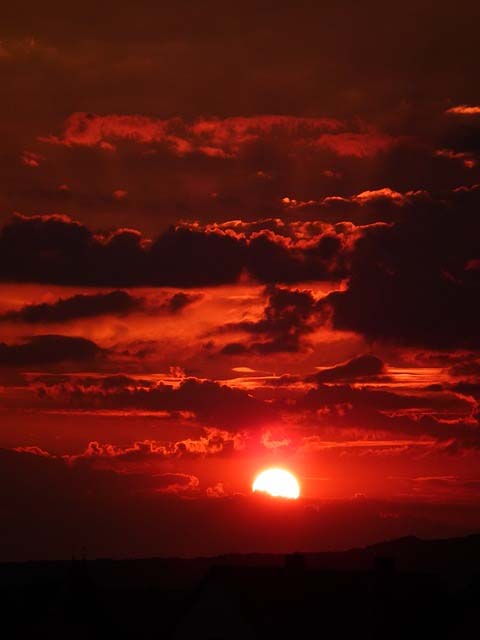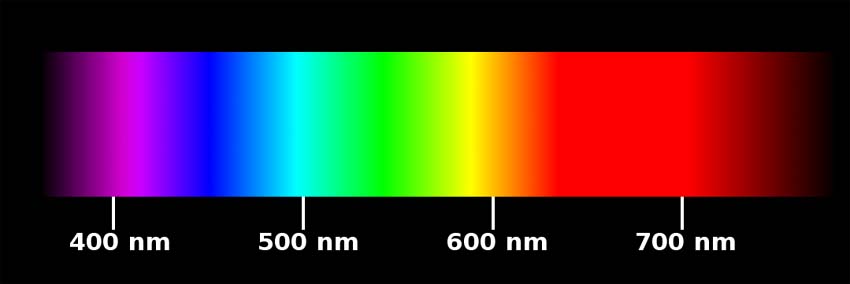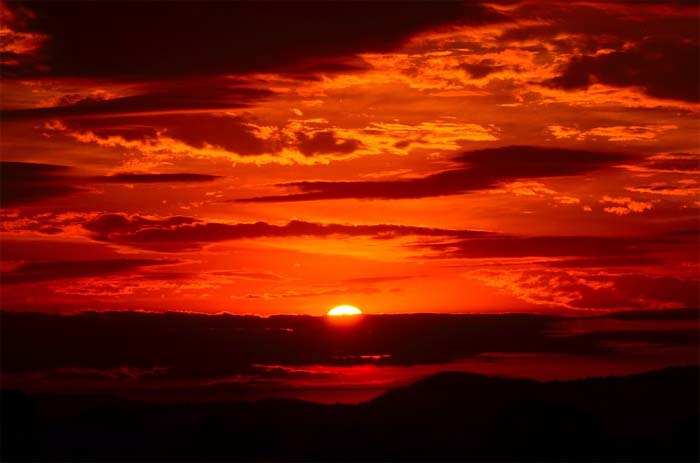RED SKY AT NIGHT...
‘Red sky at night, sailor’s delight. Red sky in the morning, sailors take warning.’ Most of us are familiar with this meteorological saying used to signify the changing sky.
Variations of 'red sky at night' can be found in history at least as far back as biblical times. A similar adage can be found in Matthew 16:1-3. When evening comes, you say, ‘It will be fair weather, for the sky is red,’ and in the morning, ‘Today it will be stormy, for the sky is red and overcast.’ It is believed the saying was originally used to help shepherds prepare for the next day’s weather.
We tend to reject knowledge that hasn’t been updated, especially ones this old, but, as it turns out, this saying is in some ways correct. The basic idea is that a red sunset may mean good weather the next day, and a red sunrise may mean bad weather for that day.
Below is a scientific explanation (simplified) for the colors we see in the sky:
RAYLEIGH SCATTERING
'Rayleigh (ray-lee) Scattering' is the scientific phenomenon that causes the sky to have color. The light from the sun that we see is a type of electromagnetic radiation and is an energy that travels in waves. The energy of the radiation depends on its wavelength and frequency.
Visible light is the part of the electromagnetic color spectrum that our eyes can see. At one end of the spectrum are the longest wavelengths, the reds and oranges. The shortest wavelengths at the other end of the spectrum are the violets and blues.
The sun's light is white and contains the entire spectrum of visible light, even though we are unable to perceive the separate colors of the sun. That is because the amount of sunlight that streams down saturates the photoreceptor cells in our eyes making all the colors blend together.
The colors we see in the sky are due to the interaction of the sun's light with molecules in the earth's atmosphere. These molecules are primarily made up of gas molecules, with oxygen comprising approximately 21% and nitrogen 78%. Additionally, there are water molecules in the form of droplets, ice crystals, and vapor as well as particles such as dust, pollutants, and ash.
As the white light of the sun strikes the molecules in the atmosphere, light with longer wavelengths (reds, oranges, and yellows) will pass through, while light of shorter wavelengths (blue, greens, and violets) will be absorbed by the gas molecules and then 'scattered' in all directions. This is called Rayleigh Scattering, named after John William Strutt, 3rd Baron Rayleigh (Lord Rayleigh), who in 1871 published a paper describing this phenomenon.
Although only about one-third of light is scattered, the smallest wavelengths have more energy and tend to scatter more easily. These smaller wavelengths correspond to blue hues. During the day, the scattered blue and violet light is reflected back to our eyes. This is why the sky will appear bluish.
The reason the skies do not appear violet is because the sun produces relatively little violet light, and the human eye is more receptive to blue frequencies than violet ones. (However, the violet could influence the sky color somewhat, resulting in a washed out blue.)
The colors in sunrises and sunsets, however, need a bit of further explanation:
SUNRISES and SUNSETS
At both sunrise and sunset, the sun is closer to the horizon, so sunlight has to travel through a longer distance and more of the atmospheric particles to reach our eyes. Due to Rayleigh scattering, most of the shorter wavelengths (blues, violets, and greens) are scattered off before reaching the lower atmosphere. Therefore, we see more red, orange, and yellow colors being scattered across the sky.
The red sky at night will typically happen during systems of high pressure and stable air incoming from the west, which is associated with clear skies or clear weather.
On the other hand, a red sky in the morning typically means that the high pressure has already passed, and an area of low pressure is moving in from the east bringing cloudy or stormy weather.
Some sunrises and sunsets are redder than others. This usually happens when there are many more particles in the atmosphere than usual, especially smoke and larger particles, as well as air pollution, that can scatter red light very effectively.
CAVEAT ABOUT THE TRUTH IN THE RED SKY SAYING!
Since the weather in the United States, as well as the United Kingdom and Canada, tends to travel from west to east, this adage may hold some truth.
However, in places where the weather isn’t mainly from the west and, since this maxim cannot account for the time good or bad weather will take to arrive, it should definitely not be used to override any professional forecast information!
Most of us carry our weather apps with us on our phones or watch the local weather forecast, but sometimes just looking to the skies at sunrise and sunset can still give a decent indication of the coming weather conditions.
WHY THE OCEAN IS BLUE?
Everything absorbs light at a different wavelength and reflects the remaining colors back at someone who is viewing it. Water molecules are very good at absorbing longer wavelengths of light.
When sunlight hits the water, the longer wavelengths of reds, oranges, and yellows are absorbed. However, very little of the shorter wavelengths of blues, greens, and violets are absorbed and much of it is reflected back to our eyes and the ocean appears blue.
So, if the ocean is absorbing red light
to reflect blue, then why does a shallow body of water, such as in a
drinking glass, appear colorless? The answer is that there is not enough water
to absorb enough light wavelengths.
In deeper waters, the wavelengths of light can fully penetrate the water. This would actually lead to less absorption because there would be too many water molecules in the way of the light wavelengths. Less absorption means less reflection. This explains why water that is shallow may appear lighter blue than waters that are deep.
It is also possible to see hues of green and other colors in the water. This is due to the sunlight bouncing off other particles in the water.
Please note: There are other types of scattering such as Raman scattering and the Mei theory, but for the purposes of this article and to simplify the understanding of the sky colors, we have only included Rayleigh Scattering.
"The Cleanest Clean You've Ever Seen."
by
ABC Oriental Rug & Carpet Cleaning Co.
130 Cecil Malone Drive Ithaca, NY 14850
607-272-1566



ABC
Carpet & Rug
Spotting Guide
Be sure to Sign up Above so you don't miss any special discounts or promotions from us.
Our blog content can also be sent directly to your inbox.
Blog content will be published periodically and will include only useful and interesting information, carefully chosen specifically for our customers.
You may opt out at any time.







